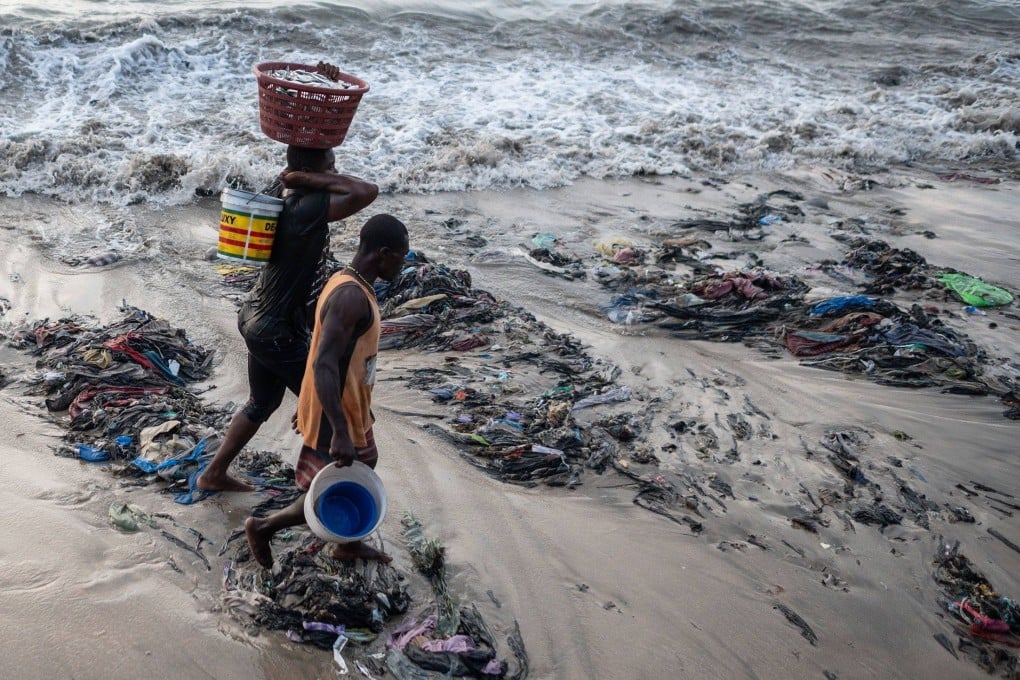The fast fashion recycling problem: why less than 1pc of old clothing becomes new garments, and the countries being buried under discarded items
- ‘Recycling’ schemes from brands like H&M and Zara are largely ineffective because the tech just isn’t there yet. In places like Ghana, the result is all around

Tangled coils of waterlogged clothes roll like carcasses in the waves along the coast of Ghana, one of the world’s biggest importers of used clothing.
The cast-offs arriving by the bale are known here as obroni wawu, or dead white people’s clothes, a phrase in the local Twi language that seeks to assign a reason to the inexplicable flood of garments from overseas.
Surely their owners wouldn’t choose to throw away so much clothing?
At Chorkor beach, near the capital, Accra, layer upon layer of rich-country detritus forms a wall more than two metres (6.6ft) high, like geological strata from different fashion eras.
A Crocs sandal peeps out here, a blue Ralph Lauren polo shirt there, a red Victoria’s Secret bra some way down. So solid is the putrid heap that huts sit on top, a shantytown built on a foundation of rags.
The waste stretches into the distance in both directions. When it rains, the city’s waterways and gutters belch garments into the ocean, says Solomon Noi, the city’s head of waste management, then waves deposit much of the refuse back on shore.
